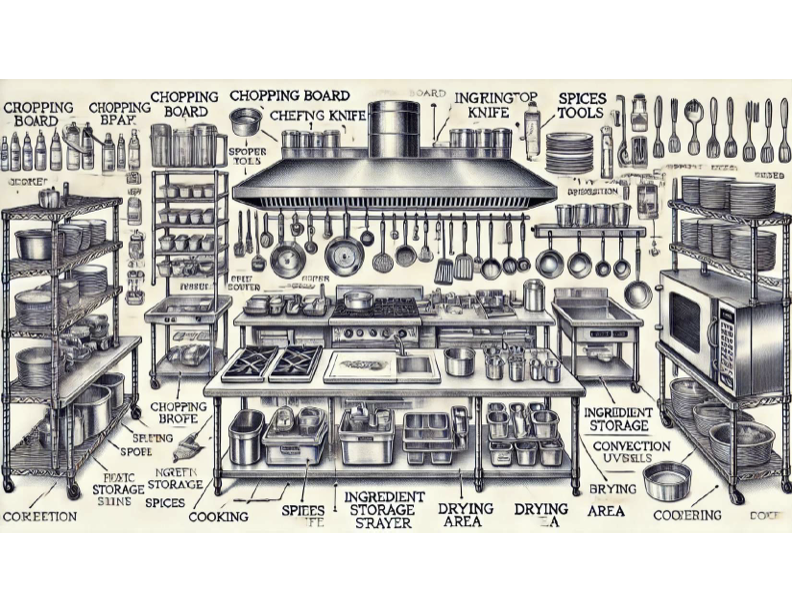In a commercial kitchen, the workflow is typically organized around three main work centers to ensure efficiency, safety, and smooth operations. These work centers are:
1. Food Preparation Area
- Purpose: This is where raw ingredients are processed, cleaned, and prepped for cooking.
- Key Features:
- Equipment: Cutting boards, sinks, mixers, food processors, peelers, knives, and scales.
- Layout: Often located near storage areas for quick access to ingredients like refrigerated or dry goods.
- Functionality: Ensures seamless preparation of raw materials to reduce downtime during cooking.
- Common Activities:
- Chopping, slicing, peeling, and marinating.
- Portioning and measuring ingredients.
- Washing produce and thawing frozen items.
2. Cooking Area
- Purpose: This is the heart of the kitchen, where prepared ingredients are cooked to create dishes.
- Key Features:
- Equipment: Stoves, ovens, grills, fryers, broilers, steamers, and microwaves. Often includes hoods and fire suppression systems for ventilation and safety.
- Layout: Centrally located for easy access from prep and plating areas, allowing chefs to focus on producing meals efficiently.
- Functionality: Heat-intensive zone designed for consistent cooking output during busy periods.
- Common Activities:
- Sautéing, frying, baking, steaming, and grilling.
- Monitoring and adjusting cooking times and temperatures.
- Ensuring proper food safety and hygiene standards.
3. Plating and Service Area
- Purpose: The final station where cooked dishes are assembled, garnished, and sent out for service.
- Key Features:
- Equipment: Warming trays, heat lamps, plate dispensers, and storage for serving utensils.
- Layout: Positioned close to the cooking area and connected to the service window or waitstaff pickup zone.
- Functionality: Ensures fast assembly and proper presentation of dishes before they are served to customers.
- Common Activities:
- Plating and garnishing dishes.
- Checking portion sizes and presentation.
- Ensuring that orders are complete and correct before service.
Importance of These Work Centers
- Workflow Efficiency: Proper organization of these centers reduces congestion, minimizes movement, and improves productivity.
- Safety: Separating tasks reduces cross-contamination and prevents accidents in high-traffic areas.
- Quality Control: Streamlined work centers help maintain consistency in food preparation, cooking, and presentation.
By organizing the kitchen into these zones, commercial kitchens can handle high volumes of orders effectively while maintaining the quality and safety of their food.

